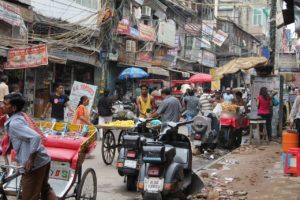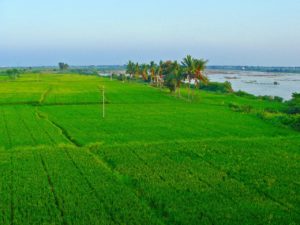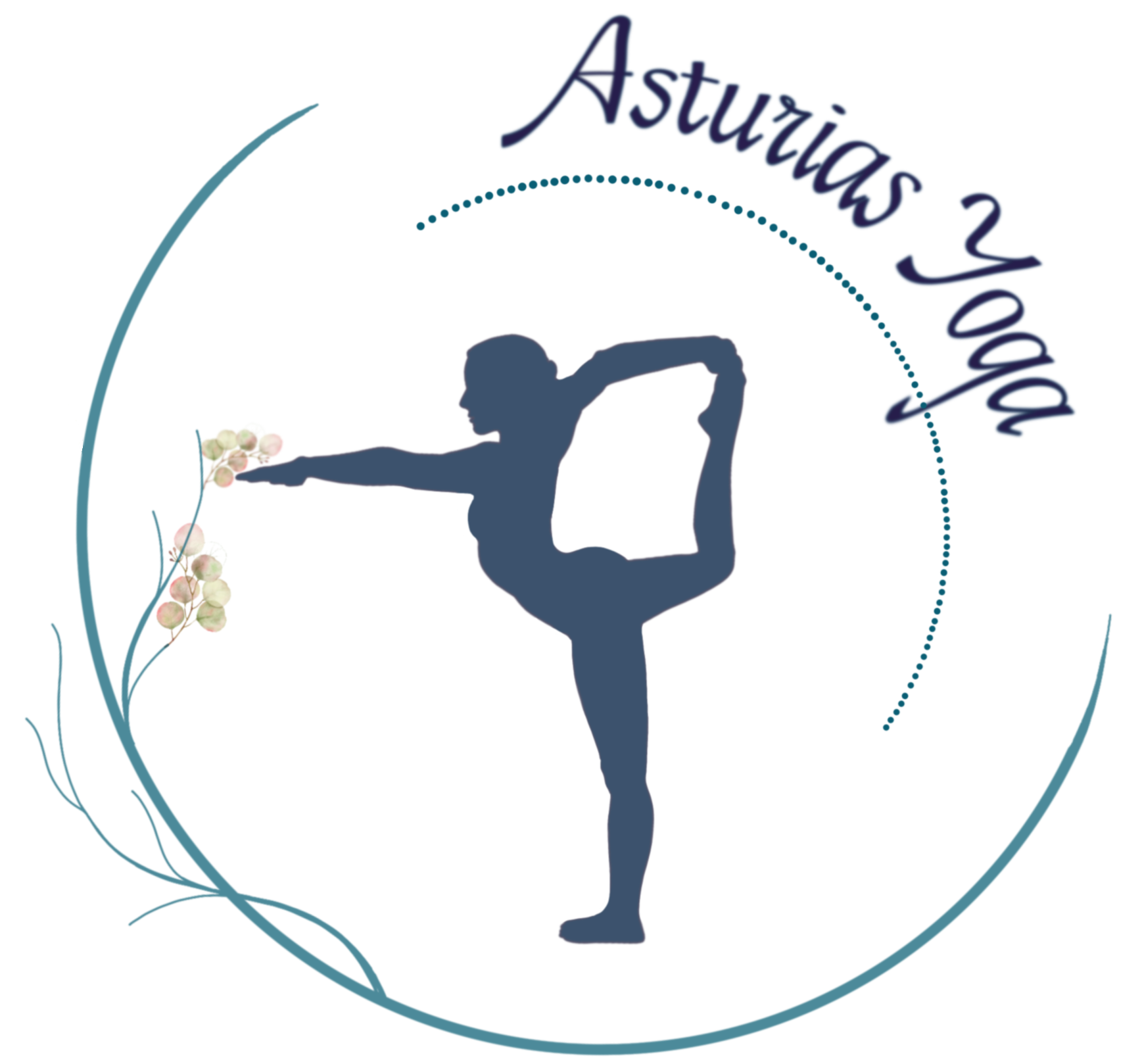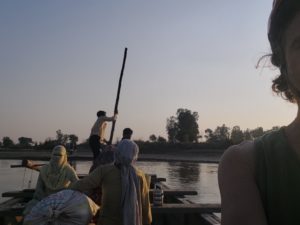Namaste Ji!
I am once again in India, the land that has had such an impact on my life, the source of my yoga practice and understanding. This is where I have spent many of our off-seasons, where I come to take a break from teaching, to become a student again, to drink from the source of my inspiration. Covid and building a cottage for the family meant that I have not been here for four years, the longest absence in twenty.
This journey is about returning to the sources. To return to the freedom of bicycle travel, to my Yoga teachers in Rishikesh, and to one of the four sources of the Ganges deep in the Himalayas. Some believe that visiting all the sources, “knowing the source of all water” as one Indian I met put it, can lead to enlightenment in this lifetime.
I have always considered that my journey in meditation began with cycling from Ireland to India in the year 2000, a journey removed from all familiarity and with endless time for contemplation. It was only years later, in a Bhuddist monastery in Sri Lanka, I realized that meditation was familiar to me, that I observed the same mental processes as I had on the bicycle and that that observation was the nature of meditation, the fundamental practice of the Yogic path.
This year I decided to start my journey in Dehli, continuing from where I left off that journey 22 years ago, and cycle to Yamnotri, a temple in the Himalayas. Yamunotri which is part of the Char Dham, literally the Four Heavenly abodes, each a temple deep in the Indian Himalaya– a pilgrimage route believed by some to lead to Moksha – complete liberation or enlightenment. In visits to India I visited two of the Dhams, both by two-wheels, making Yamunotri the third of four. For me bicycle touring itself has a great sense of liberation and that liberation is its highest draw. If the rumours of Moksha are true, that would be a welcome extra, but I will have to wait and see. The fact that Yamunotri lies deep in the Himalaya and beyond the reaches of population density and busy roads was the principal appeal for me. Also, Yamnotri is 350 km from Delhi, and about 200 km from Rishikesh, a fine distance for a week of bicycle travel, and if I could choose a meaningful pilgrimage destination, then where could be more meaningful than Rishikesh, the source of my Yoga practice and home of my teachers?
My ride began in the filth and chaos of Delhi’s centre, whose air quality is officially ranked third worst in the world. Fumes and copious dust hung in the air, reducing visibility to around fifty meters (beneath an otherwise perfectly blue sky) which constantly irritated my eyes.  My initiation certainly did not afford any time for meditative contemplation, rather it was my concentration and reactions that were exercised to capacity. The first 5 km were covered slower than I could have walked. The time consisted mainly of long waits at traffic light where I was stared at like a circus freak by the multitudes waiting alongside (as long as five minutes at a time) followed by short furious dashes where everyone vied for position. The pedestrians (humans and free ranging cows) and vehicles (cars, motor rickshaws, cycle rickshaws, wooden carts pulled by men and bullocks) had a density that cannot be imagined in the West. Incredibly, I saw men fast asleep atop wooden cycles carts right in the middle of the street. In the west you would assume such a people are dead, but Indians are indeed capable of sleeping in such places.
My initiation certainly did not afford any time for meditative contemplation, rather it was my concentration and reactions that were exercised to capacity. The first 5 km were covered slower than I could have walked. The time consisted mainly of long waits at traffic light where I was stared at like a circus freak by the multitudes waiting alongside (as long as five minutes at a time) followed by short furious dashes where everyone vied for position. The pedestrians (humans and free ranging cows) and vehicles (cars, motor rickshaws, cycle rickshaws, wooden carts pulled by men and bullocks) had a density that cannot be imagined in the West. Incredibly, I saw men fast asleep atop wooden cycles carts right in the middle of the street. In the west you would assume such a people are dead, but Indians are indeed capable of sleeping in such places.
On a number of occasions, I was physically bumped by other vehicles, or at best, squeezed out of the way in the politest possible manner (beginning with a soft squeeze and increasing the pressure until sufficient to remove me from the path). The apocalyptic din as 500 waiting vehicles revved their engines and blasted their horns when traffic lights turned a long-awaited green had me laughing aloud – does traffic get any crazier? Having no other option, I squeezed and bumped and darted for available spaces with the rest of them (my concentration levels similar to that when I ride mountainbike downhill in a muddy forest )
Escaping the clutches of the chaotic centre, I was faced with a concrete landscape of eight lane highways. The night previous in Delhi, I had considered myself full smart and moderan on the navigation front as I previewed the “walking route” from Delhi to Yamnotri, which Google Maps had plotted for me almost entirely along canals and quiet roads. During the morning however, I noticed on numerous occasions that I was actually getting further away from my destination. The reason I soon found out is that g.p.s is faulty in India. Stopping at the side of a highway, Google Maps located me in a district some 200m to the east. Later it would consistently locate me on the other side of the Yamuna river, a river some 100m across, even when I was a kilometer from the river bank! The voice instructions had me doing endless u-turns and circles and I soon abandoned them. I tried then to simply navigate North using the position of the sun, on keeping it as much as possible on my back. This lead in urban areas to tight pot holed alleys and numerous dead ends, and when I finally made it to countryside in the afte rnoons, to numerous sandy walking paths and the regular necessity of bike carrying. Such errors gave welcome glimpses into Indian life (woman combing their hair sitting on beds moved to the stree, the poornerss of Muslim areas in close proximity to their better fairing Hindu neighbours). Alas, in terms of progress toward my goal, this method too was highly inefficient. My final resort? I asked people! Returning to its most traditional form, navigation finally worked and I had a reason to interact in my basic Hindi with locals, all of whom were pleased to help. By the late afternoon I had escaped Dehli’s reaches and pedalled quiet lanes and dirt track through sugarcane and vegetable fields
rnoons, to numerous sandy walking paths and the regular necessity of bike carrying. Such errors gave welcome glimpses into Indian life (woman combing their hair sitting on beds moved to the stree, the poornerss of Muslim areas in close proximity to their better fairing Hindu neighbours). Alas, in terms of progress toward my goal, this method too was highly inefficient. My final resort? I asked people! Returning to its most traditional form, navigation finally worked and I had a reason to interact in my basic Hindi with locals, all of whom were pleased to help. By the late afternoon I had escaped Dehli’s reaches and pedalled quiet lanes and dirt track through sugarcane and vegetable fields
When I asked directions to the town of Bhagpat, an old white haired farmer on a bullock cart first pointed down a road a junction and then changed his mind, indicating a sandy track instead. “Nadi” (river) was his last word. I followed the track and soon came to the sandy bank of the Yamuna which was calm clean and, bar a tennager staring at a mobile phone and two camels, completely deserted. For a while a doubted the old man’s advice but felt content to be by the quiet and surprisingly clean river. No sooner had I contemplated spending the night there in my sleeping bag than three women with sacks of rice on their heads appeared and whistled loudly to a tent on the other shore. Soon two men emerged and mounted a large raft made of bamboo and crossed over to us using 2 bamboo poles pushed against the bottom of the shallow river. We all had to take our shoes off to embark, and thus I made my first contact with the waters of the Yamuna, the principal tributary of the Ganges, to whose source in the Himalayas I am bound.
I will keep you posted here!
Namaste
Simon
Want to read more? Simon has written a book, “Turning the Wheel” about his cycle from Ireland to India in the year 2000. You can find it on amazon here

